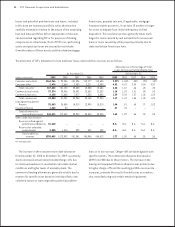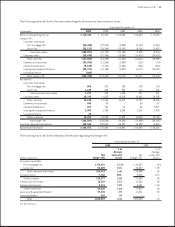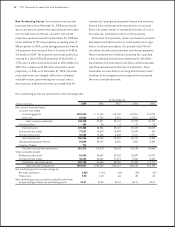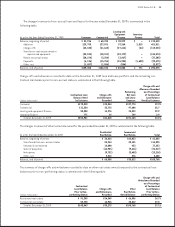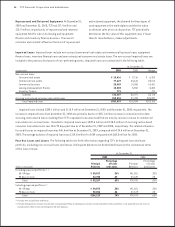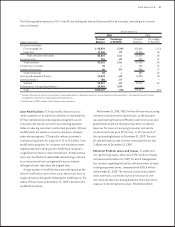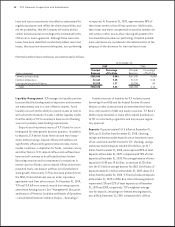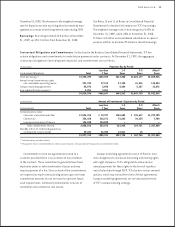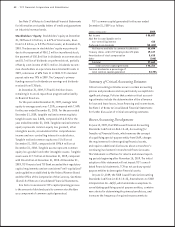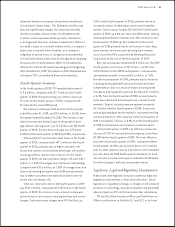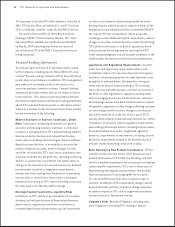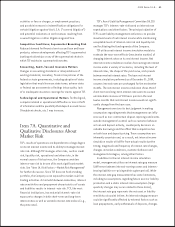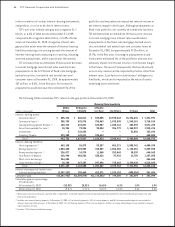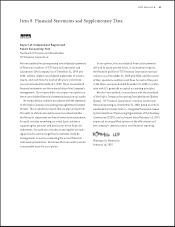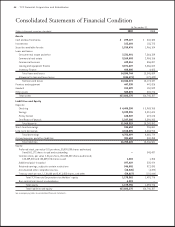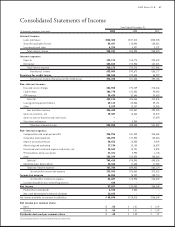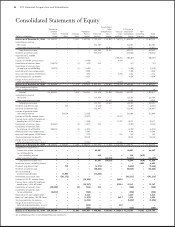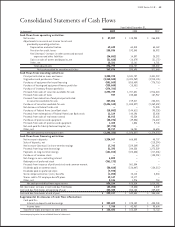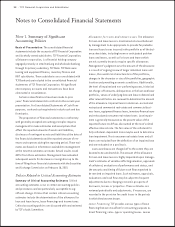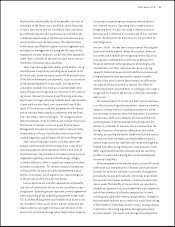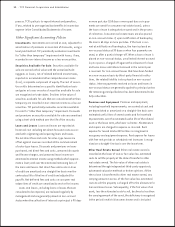TCF Bank 2009 Annual Report Download - page 58
Download and view the complete annual report
Please find page 58 of the 2009 TCF Bank annual report below. You can navigate through the pages in the report by either clicking on the pages listed below, or by using the keyword search tool below to find specific information within the annual report.
42 : TCF Financial Corporation and Subsidiaries
10-K pursuant to Section 302 of the Sarbanes-Oxley Act of
2002. TCF has also led, as Exhibits 32.1 and 32.2 to Form
10-K, certicates called for under Section 906 of the Act.
Pursuant to Section 303A.12 of the New York Stock
Exchange (“NYSE”) Listed Company Manual, TCF’s Chief
Executive Ofcer submitted a certication to the NYSE
on May 15, 2009 indicating that he was not aware of
any violation by TCF of the NYSE’s Corporate Governance
listing standards.
Forward-Looking Information
This annual report on Form 10-K and other reports issued
by the Company, including reports led with the SEC, may
contain “forward-looking” statements that deal with future
results, plans or performance. In addition, TCF’s management
may make such statements orally to the media, or to
securities analysts, investors or others. Forward-looking
statements deal with matters that do not relate strictly to
historical facts. TCF’s future results may differ materially
from historical performance and forward-looking statements
about TCF’s expected nancial results or other plans and are
subject to a number of risks and uncertainties. These include,
but are not limited to the following:
Continued or deepening deterioration in general
economic and banking industry conditions, or continued
increases in unemployment in TCF’s primary banking markets;
adverse economic, business and competitive develop-
ments such as shrinking interest margins, deposit outows,
deposit account attrition, or an inability to increase the
number of deposit accounts; adverse changes in credit
and other risks posed by TCF’s loan, lease, investment, and
securities available for sale portfolios, including continuing
declines in commercial or residential real estate values or
changes in the allowance for loan and lease losses dictated
by new market conditions or regulatory requirements;
interest rate risks resulting from uctuations in prevailing
interest rates or other factors that result in a mismatch
between yields earned on TCF’s interest-earning assets and
the rates paid on its deposits and borrowings.
Limitations on TCF’s ability to pay dividends or to increase
dividends in the future because of nancial performance
deterioration, regulatory restrictions or limitations;
increased deposit insurance premiums, special assessments
or other costs related to deteriorating conditions in the
banking industry and the economic impact on banks of the
Emergency Economic Stabilization Act, as amended (“EESA”);
the impact of nancial regulatory reform proposals,
including possible additional capital requirements; adverse
changes in securities markets directly or indirectly affecting
TCF’s ability to sell assets or to fund its operations; dimin-
ished unsecured borrowing capacity resulting from TCF
credit rating downgrades and unfavorable conditions in the
credit markets that restrict or limit various funding sources.
Consumer
protection and supervisory requirements which could
include the creation of a new consumer protection agency
and limits on Federal preemption for state laws that could
be applied to national banks; the imposition of require-
ments with an adverse impact relating to TCF’s lending,
loan collection and other business activities as a result of
the EESA, or other legislative or regulatory developments
such as mortgage foreclosure moratorium laws; reduction
of interchange revenue from debit card transactions; impact
of legislative, regulatory or other changes affecting customer
account charges and fee income; changes to bankruptcy
laws which would result in the loss of all or part of TCF’s
security interest due to collateral value declines (so-called
“cramdown” provisions); adverse regulatory examinations
and resulting enforcement actions, including those provided
for under the Bank Secrecy Act; heightened regulatory
practices, requirements or expectations, including, but not
limited to, requirements related to the Bank Secrecy Act
and anti-money laundering compliance activity.
TCF has
recently introduced a new anchor retail deposit account
product that replaces TCF Totally Free Checking, and that
calls for a monthly maintenance fee on accounts not meeting
certain specic requirements. TCF is also in the process of
implementing new regulatory requirements that prohibit
nancial institutions from charging NSF fees on point-
of-sale and ATM transactions unless customers opt-in.
Customer acceptance of the new product changes cannot
be predicted with certainty, and these changes may have
an adverse impact on TCF’s ability to generate and retain
accounts and on its fee income revenue.
Results of litigation, including class
action litigation concerning TCF’s lending or deposit


